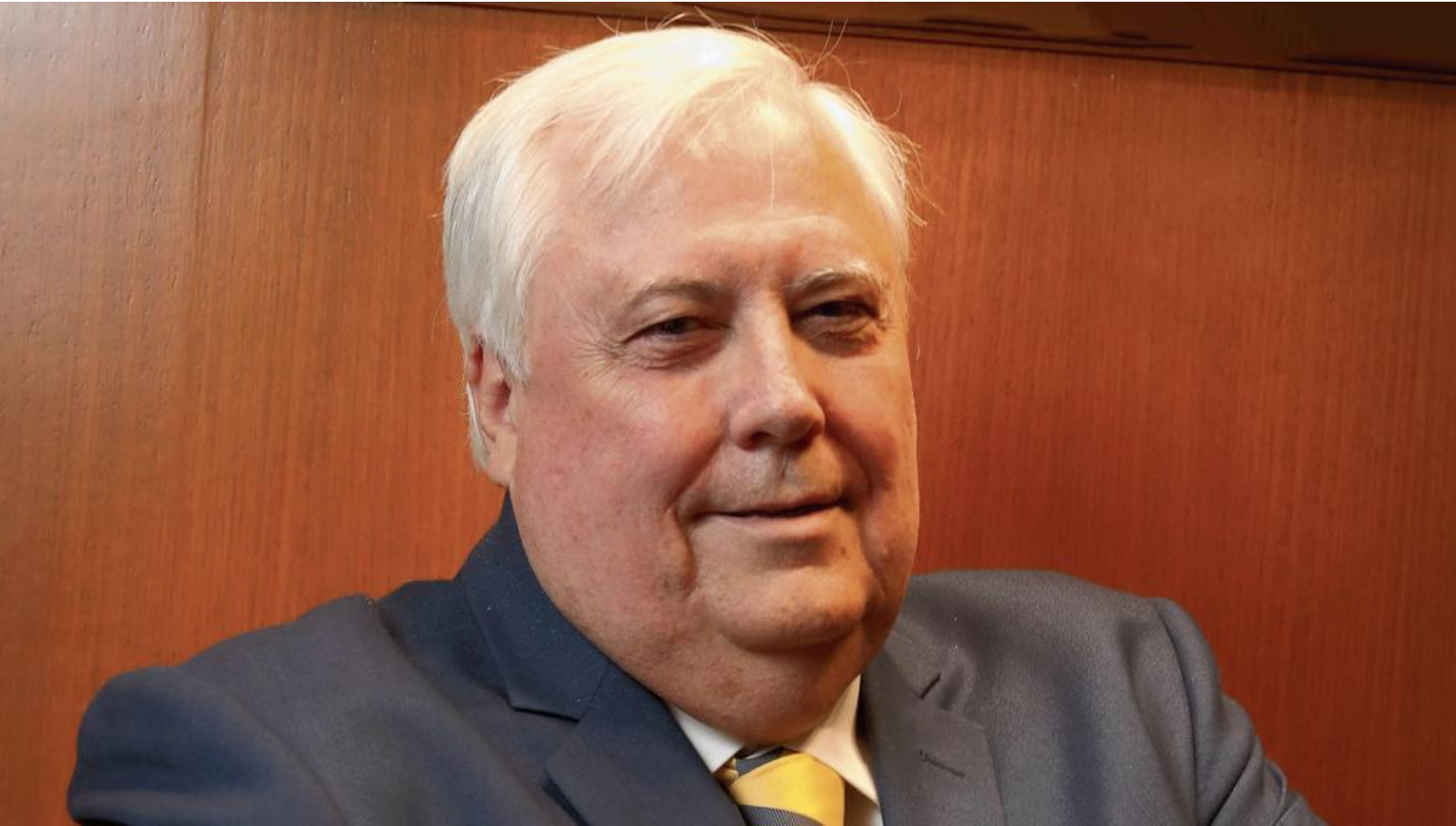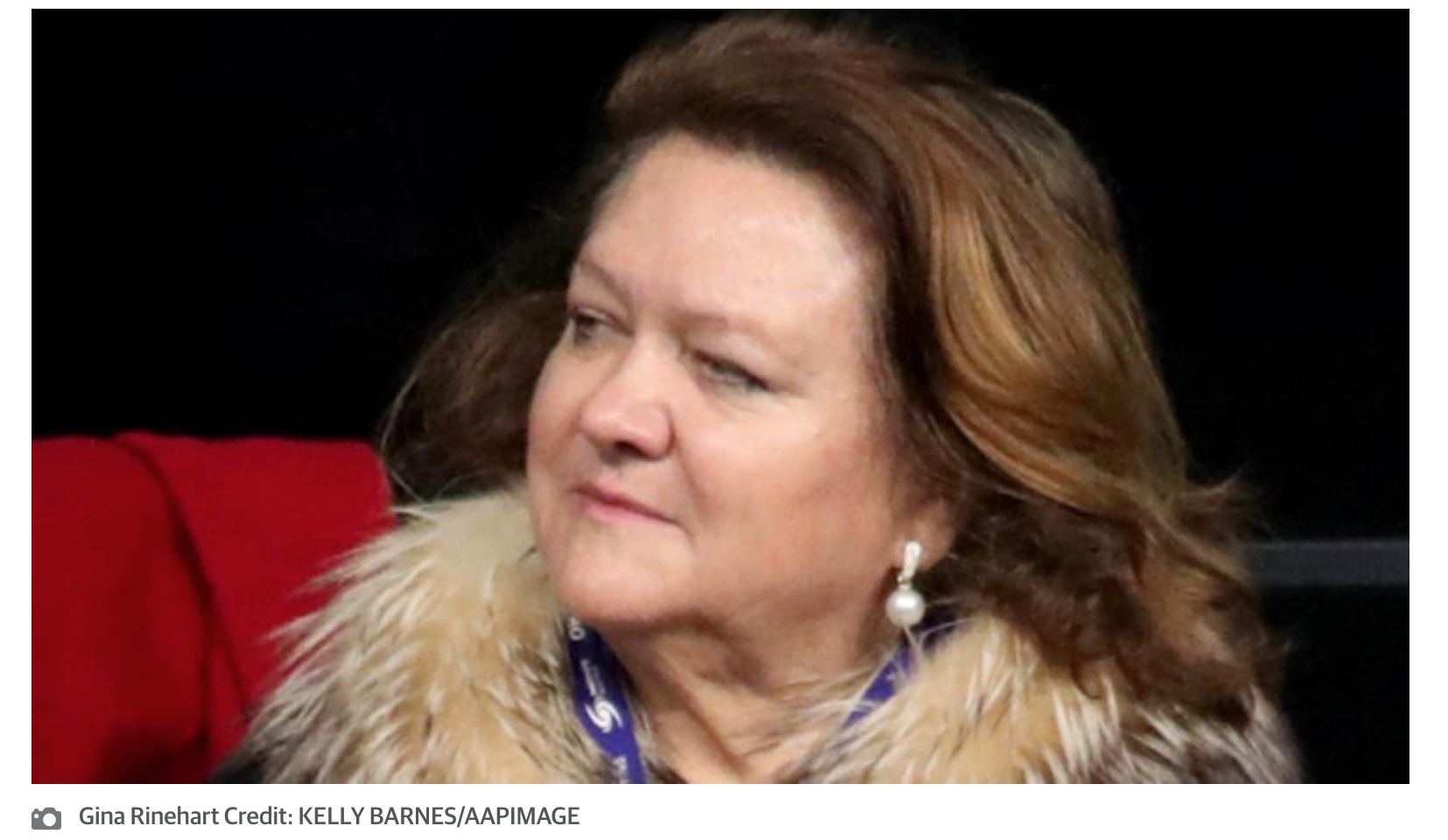Article by Neale Prior courtesy of the Geraldton Guardian

Clive Palmer has crowned himself WA’s royalties king, usurping Angela Bennett and Gina Rinehart as the top beneficiary of Pilbara iron ore entitlement payments.
Mr Palmer’s flagship company Mineralogy has revealed in a new Supreme Court action against his benefactors at the Sino Iron project that his royalties haul burst beyond $320 million last year.
Mr Palmer’s haul from the $20 billion Pilbara iron pellet production operation is likely to head towards $400m of royalties this financial year, thanks to iron ore and pellet prices surging as China recovered from its COVID-19 shutdown.
The Palmer company claims it suffered more than $1m of currency losses because Sino failed to fully pay $100m of GST invoices by an August 25 deadline.
Project owner CITIC-Pacific said in a statement it had not received formal notification of Mr Palmer’s latest legal action.
“All GST obligations continue to be met,” CITIC said. “At the same time, Mr Palmer continues to derive considerable benefit from our investment in iron ore downstream processing in WA and the hard work of our 3000 employees and contractors.”
Although the action is one of many between Mineralogy and CITIC subsidiaries, it provides what could be the first detailed public breakdown of almost $1m in daily royalties flowing from operations south-west of Cape Preston.

With Mr Palmer the unchallenged owner of Mineralogy, his royalty stream is believed to far exceed even that flowing to any descendants of renowned iron ore partners Peter Wright and Lang Hancock.
The royalty payments flowing to Wright Prospecting and Mrs Rinehart’s Hancock Prospecting could well exceed $500m, based on published figures and information provided by sources.
But those payments are ultimately carved up between Mrs Rinehart and her four children as 23 per cent owners of Hancock Prospecting, and between Mrs Bennett and the family of her late brother Michael Wright as beneficial owners of Wright Prospecting.
Wright Prospecting, half-owned by Mrs Bennett, enjoyed $296m of royalty-related payments in 2019-2020. This was made up of $150m in royalties directly and another $146m through the old Hancock-Wright partnership.
While Hancock Prospecting does not disclose its total royalties, it now says its royalty income is less than 2 per cent of its $10.6b annual revenue. Most of Hancock’s revenue is now derived from its majority-owned Roy Hill mine, developed under Mrs Rinehart, and from its Hope Downs joint ventures with Rio Tinto.
Mr Palmer has proved to be a winner thanks to a State agreement signed in 2003 and Chinese State-owned CITIC developing the Sino Iron project turning unfashionable magnetite ore into high-grade iron pellets.
Mineralogy has been in an array of legal battles with Sino over royalty arrangements, which are headlined by a US dollar payment based on prevailing pellet prices and a relatively modest Australian dollar payment based on a long-lapsed benchmark.
Mineralogy’s claim over allegedly late GST payments includes a $73,000 claim for default interest related to payments made between August and October.
Based on the GST figures in the writ, the quarterly royalty take by Mineralogy surged from about $50m in the December 2017 quarter to more than $80m in the final quarter of last year.
By the end of the March quarter of this year, the company’s royalties take for 2019-20 had exceeded $240m. This put Mr Palmer on track for his royalty take from Sino Iron to beat $320m in 2019-20.
Mineralogy’s total royalties in 2018-2019 were $270m, based on information in the writ.
These figures exclude GST.
Wright Prospecting’s iron ore royalties revenue in 2018-2019 was $236.6m, including $125.5m received from its rights through the Hancock and Wright partnership.















